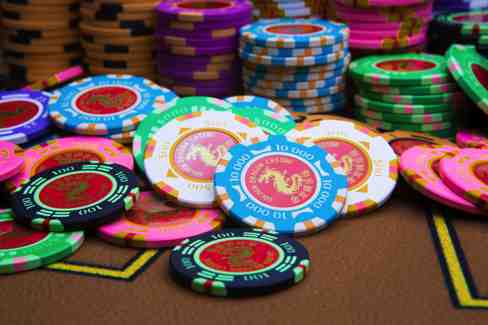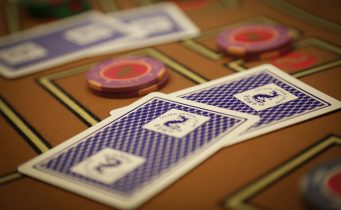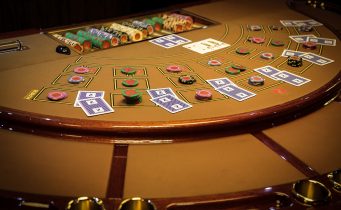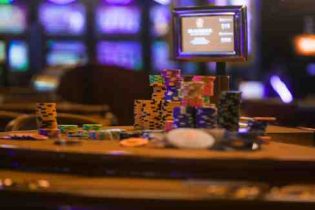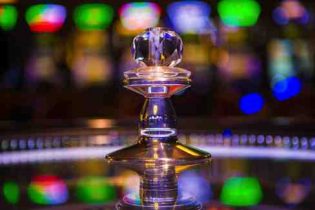Blackjack is played with 6 decks of cards. Card numbers between 2 and 10 are worth their face value. Kings, Queens, and Jacks are each worth 10, and Aces may be used as either 1 or 11. The object for the player is to draw cards totalling closer to 21 and beating the dealers cards.
The best wining hand is blackjack which is an Ace and a face card or Ace and 10 and pays one and a half time the bet. However, if the dealer also has blackjack or the same card value as the highest player hand at the table, the hand pushes, or ties, and you just get your original bet back.
But if the dealer goes on to draw 21 in three or more cards, your blackjack is still a winner with its 3-2 payoff.
The game is usually played at a halfmoon-shaped table with places for up to seven players on the outside and for the dealer on the inside. At one corner of the table is a rectangular placecard that tells the minimum and maximum bets at that table, as well as giving variations in common rules. For example, the sign might say, “BLACKJACK. GHc50 to GHc2,000. Split any pair three times. Double on any two cards.” That means the minimum bet at this table is GHc50 and the maximum is GHc2,000.
Play begins when you place a bet by stacking a chip or chips in the betting square on the table directly in front of you. After all bets have been placed, each player and the dealer are given two cards. In a shoe game, all player cards are dealt face up, and the players are not permitted to touch their cards.
Once the cards have been dealt, players decide in turn how to play out their hands. After all players have finished, the dealer plays according to set rules: The dealer must draw more cards to any total of 16 or less and must stand on any total of 17 or more. The most common soft 17 is ace-6, but several other totals, such as ace-3-3 or ace-4-2, on up to ace-ace-ace-ace-ace-ace-ace in a multiple deck game, are soft 17s.
Hit: If you hit, you take another card or cards in hopes of getting closer to 21. If the player’s total exceeds 21 after hitting, the player is said to “bust” and loses the bet. Verbal calls to hit are not accepted — signals are used for the benefit of the security cameras above the table, so a taped record is on hand to settle any potential disputes.
Stand: If you stand, you elect to draw no more cards in hopes that the current total will beat the dealer.
Double down: You may elect to double your original bet and receive only one more card regardless of its denomination. It is allow you to double up on any two cards. Double down by taking a chip or chips equal to the amount of your original bet and placing them next to your bet.
Split: If your first two cards are of the same face value, you may elect to make a second bet equal to your first and split the pair, using each card as the first card in a separate hand. For example, if you are dealt two 8s, you may slide a second bet equal to the first to your betting box. The dealer will separate the 8s, then put a second card on the first 8. You play that hand out in normal fashion until you either stand or bust; then the dealer puts a second card on the second 8, and you play that hand out.
Insurance: If the dealer’s face up card is an ace, you may take “insurance,” which essentially is a bet that the dealer has a 10-value card down to complete a blackjack. Insurance, which may be taken for half the original bet, pays 2-1 if the dealer has blackjack. The net effect is that if you win the insurance bet and lose the hand, you come out even. For example, the player has 18 with a GHc100 bet down. The dealer has an ace up. The player takes a GHc50 insurance bet. If the dealer has blackjack, the player loses the GHc100 bet on the hand but wins GHc100 with the 2-1 payoff on the GHc50 insurance bet

